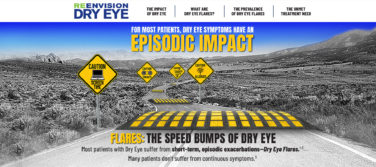With fall upon us, it’s a good time to revisit the Closed-Looped Marketing cycle. In our last article we discussed Planning: learning about Who your target patients are, What channels they prefer, and How to message them. Looking to leverage their planning insights, marketers are now focusing on Execution and Targeting.
This article will examine considerations for Execution and Targeting to deliver your brand’s message to as many of your target patients as possible. The use of consistent data sources carried forward from Planning can significantly enhance your brand’s promotion.
Execution: A Myriad of Channels
Marketing plans should execute against the media channels your target patients spend time consuming. Direct-to-consumer (DTC) channels are far-reaching: TV (Linear or advanced data-driven); digital (programmatic, endemic, search, social, email); and even more traditional vehicles such as print, out-of-home (OOH), or direct mail.
Effective execution of DTC advertising will expose the most patients to your messaging with the least amount of waste within whatever budget you possess. It should also take advantage of everything you learned in your planning process, ideally using some of the very data sources that were instrumental in profiling your audience in terms of media preferences, health engagement, and attitudes and lifestyles.
Every brand will come up with a different DTC media plan that is based on their unique circumstances (e.g., market share, indication, HCP detailing share of voice, and agency relationships), but here are some broad channel considerations:
- Patient media preferences vs. actual media budget: Can your DTC budget accommodate the channels that your audience prefers? Can newer channels such as addressable television, connected TV, or digital audio provide more targeted reach at a lower investment?
- Traditional media vs. digital media: Does your patient population consume media in traditional or digital formats? Is your target audience likely to buy a physical newspaper or consume news online? Do they prefer to hold a paper flyer or do they read every email received? Do they watch network TV through a cable provider or do they stream television?
- Endemic vs. programmatic: When engaging digitally, does your target audience visit trusted medical sites for information, or are they better reached programmatically across the internet?
- Managed service vs. direct data segment purchase for programmatic placements: Are your needs better met with white-glove service and continuous optimization provided by managed-service partners, or with a trade desk handling buying media against targeted audiences? Would a mix of the two provide the reach and quality required?
Targeting: Even More Choices
Your planning process and product label has defined which patients you want to expose to your message. You have a profile of your patients in terms of their media channel preferences, healthcare usage, demographics, mindset and activities, as well as their health and wellness engagement. Now you need to translate that information into targeting across media channels and tactics. These targeting challenges are common to any brand:
- Reach: Deploying advertising to a significant percentage of the relevant patient population of interest. For example, the desire to reach as many skin cancer patients as possible.
- Precision: Serving ads to those with a combination of specific health characteristics. For example, reaching patients diagnosed with melanoma and who have had surgery to remove the melanoma as well as the impacted lymph nodes. This focused patient profile allows media to reach an audience that is eligible for the advertised brand and more likely to be ready for this treatment option.
- Privacy: Ensuring that you are not specifically targeting consumers by using their protected health information, such as medical history.
- Cost efficiency: Minimizing wasted media spending on unqualified consumers while also minimizing the cost per qualified consumer reached.
Plenty of targeting solutions are available to support managed service and media agency trade desks. Some rely on readily available demographics, others use predictive models, while others use hyperlocal targeting.
- Demographics: When you target an audience based on a few, widely available demographic parameters such as age and gender. Privacy is maintained as no health information is used. While reach can be high with demographic targeting, the precision of this approach is low for most pharma brands.
- Predictive models: In this method, privacy in targeting is accomplished by using predictive models whose inputs are not health related. The approach is much like credit-scoring in banking: publicly available data such as demographics and financial summaries are inputs into a statistical or machine learning model that predicts likelihood of having a disease or taking a medication. The likelihood score ranks consumers (and their digital devices) for targeting. Reach can be high, depending on the score threshold used. However, precision can be lacking as non-health variables are often bad predictors of health.
- Hyperlocal areas: This method uses a comprehensive geographic and multi-year data asset of validated real-world medical and prescription claims data to find hyperlocal areas where patients meet the desired healthcare profile. These areas get to be as granular as 9-digit zip codes. Privacy is met via the generalized time and geographic dimensions. Precision can be quite high, especially for lower prevalence conditions. Reach is limited by the size of the patient population. (Disclaimer: This is a solution employed by Medicx Health’s own proprietary, HIPAA-certified, and Patented Micro-Neighborhood® targeting platform.)
A recently completed survey by a third party suggests that marketers find value in the use of prescribing and diagnosis data for targeting, but many don’t take advantage of the available solutions. We encourage utilizing these targeting solutions in a privacy-preserving, cost-effective way.
If supported by their planning activity and market position, marketers may also include targeting solutions that focus on adherence or market expansion. In addition, targeting can be developed to allow differentiated messaging to key subsets of patients. For example, a sizeable subgroup of patients visits a family practitioner for their medical care, but the advertised product is only available through a specialist due to a REMS program restriction. This group can be targeted to receive a message that emphasizes visiting a specialist—perhaps even linking direct to a “Find A Doctor” feature on the website.
Any selected targeting solution should take advantage of planning results and be measured against key performance indicators aligned to brand objectives. In short, solutions should find your target patients, at scale, cost effectively.
In conclusion, we strongly advocate the need to develop and execute a media plan using consistent data assets. This process includes targeting methods aligned with the strategic plan. Follow this road and you will maximize patient reach in a cost-efficient manner that addresses brand objectives.
Our next article will address measurement, which includes the importance of not just calculating return on ad spend, but also learning about Who your campaign has reached, What actions were taken, and Why your campaign worked.









